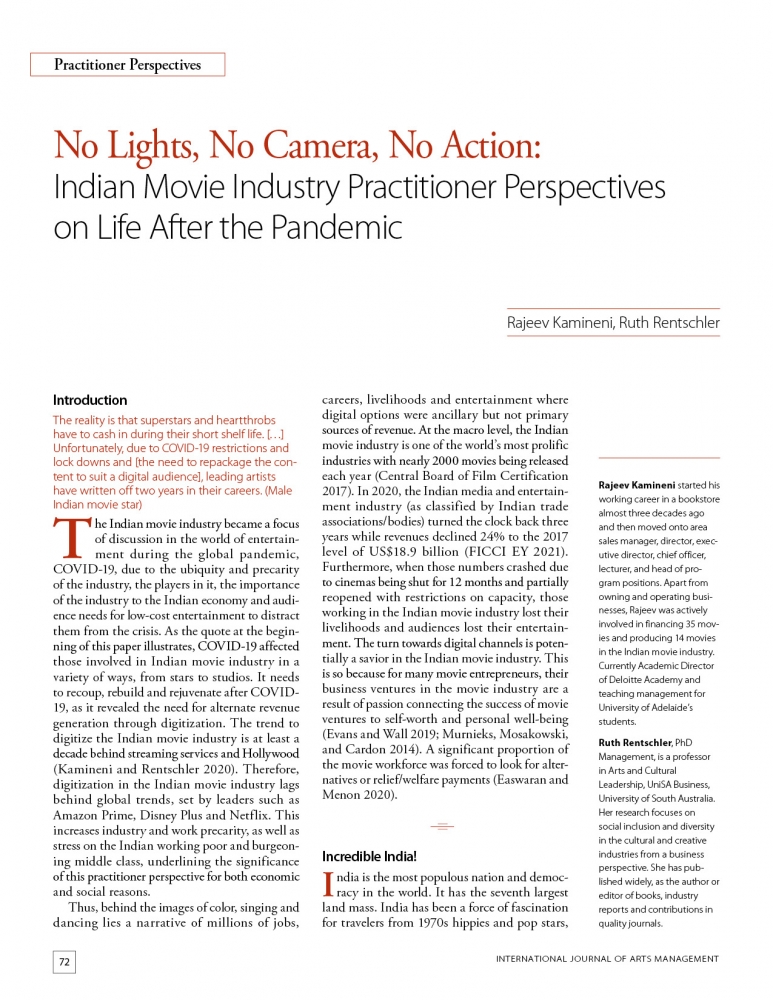No Lights, No Camera, No Action: Indian Movie Industry Practitioner Perspectives on Life After the Pandemic
Product: Article
$21.00 CA
Rajeev Kamineni, Ruth Rentschler
Rajeev Kamineni started his working career in a bookstore almost three decades ago and then moved onto area sales manager, director, executive director, chief officer, lecturer, and head of program positions. Apart from owning and operating businesses, Rajeev was actively involved in financing 35 movies and producing 14 movies in the Indian movie industry. Currently Academic Director of Deloitte Academy and teaching management for University of Adelaide’s students.
Ruth Rentschler, PhD Management, is a professor in Arts and Cultural Leadership, UniSA Business, University of South Australia. Her research focuses on social inclusion and diversity in the cultural and creative industries from a business perspective. She has published widely, as the author or editor of books, industry reports and contributions in quality journals.
ABSTRACT
How does the Indian movie industry recoup, rebuild and rejuvenate post-COVID-19? Are there new pathways opening up? Is digitization one of them? These are the hot topics that are being discussed by practitioners in the Indian movie industry, since the global pandemic, COVID-19, reduced India as a nation from a thriving movie industry to a struggling movie industry. They are illustrative of entrepreneurial failure in the Indian movie industry, exposed by COVID-19. There is an urgent need to develop alternate pathways for revenue generation to protect the Indian movie industry from further decline. With close to 2000 movies being released each year, the movie industry was one of the largest employment-generating industries in India, bringing both income and joy to people’s lives in a nation beset by vast differences in wealth. However, it has been based on theatrical exhibition rather than digitization, with a lukewarm response to digital providers, to its detriment. During the pandemic, lack of digital innovation flipped from ‘might do’ to ‘must do’ in order to ensure the many family businesses in the Indian movie industry survive and monetize developed content. Though India’s poor lost out on their share of entertainment due to screen closures, digitization ensured that the growing middle class could be catered to. However, the business model is rapidly changing and the role of the producer as an entrepreneur is diminishing because artists and technicians are directly striking deals and developing content with funding from digital providers.
KEYWORDS
Indian movie industry, COVID-19 impact, entrepreneurial failure, resilience, digital disruption

